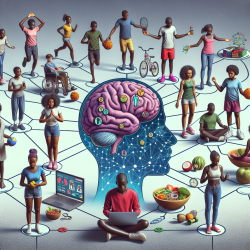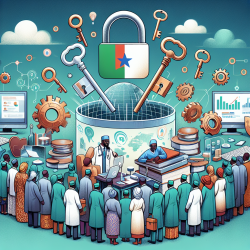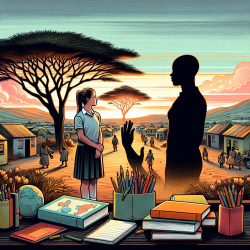Introduction
Understanding the health and wellbeing of young people is crucial for practitioners, especially those involved in online therapy services like TinyEYE. The study titled "Bleeding Bodies, Untrustworthy Bodies: A Social Constructionist Approach to Health and Wellbeing of Young People in Kenya" provides valuable insights into the perceptions and social constructions of health among Kenyan youth. This blog explores how practitioners can leverage these findings to enhance their skills and encourage further research.
Key Findings from the Study
The research conducted in Kenya involved focus group discussions and in-depth interviews with youth aged 15 to 24. The study revealed several structural factors influencing youth perceptions of health and wellbeing, including:
- Economic Opportunities: Access to employment and quality education were significant factors affecting youth wellbeing.
- Environmental Conditions: Issues like water scarcity and food insecurity were major concerns, particularly in rural areas.
- Social Interactions: Trust and social cohesion were identified as critical for a healthy community.
- Healthcare Access: Availability of healthcare services, including reproductive health resources, was a key concern.
Implications for Practitioners
Practitioners can improve their skills by incorporating these insights into their practice. Here are some strategies:
- Cultural Sensitivity: Understand the cultural and social contexts of the youth you work with. This knowledge can help tailor therapy sessions to address specific concerns like trust and social cohesion.
- Resource Accessibility: Advocate for better access to healthcare resources and educational opportunities for youth in resource-constrained areas.
- Community Engagement: Encourage youth to participate in community activities that foster social trust and cohesion.
Encouraging Further Research
The study highlights the need for more disaggregated data that reflects the voices of youth regarding their health and wellbeing. Practitioners are encouraged to engage in further research to explore these issues in different contexts and populations. Understanding the unique challenges faced by youth in various regions can inform policy and intervention strategies aimed at improving health outcomes.
Conclusion
By implementing the findings from this study, practitioners can enhance their ability to support youth in achieving better health and wellbeing outcomes. The insights gained from Kenyan youth can serve as a foundation for developing culturally sensitive and effective therapy practices.
To read the original research paper, please follow this link: Bleeding Bodies, Untrustworthy Bodies: A Social Constructionist Approach to Health and Wellbeing of Young People in Kenya.










